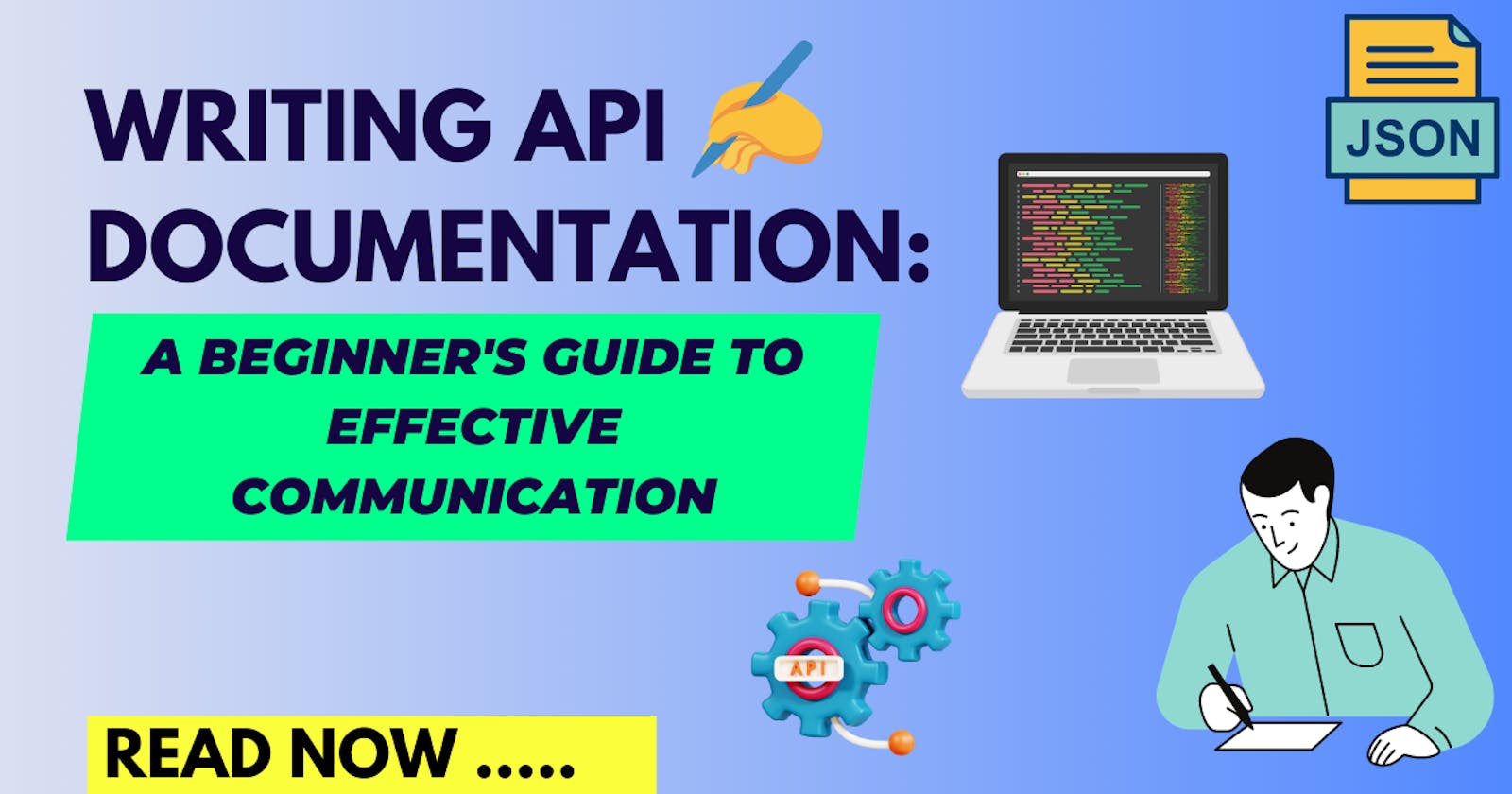Writing API Documentation: A Beginner's Guide to Effective Communication
Table of contents
- Understanding the Audience:
- Documenting Endpoints and Requests:
- Providing Response Examples:
- Explaining Authentication and Authorization:
- Enumerating Error Handling:
- Including Code Samples and SDKs:
- Offering Interactive Documentation:
- Structuring and Organizing Documentation:
- Encouraging Feedback and Collaboration:
- Conclusion:
API documentation serves as a critical bridge between developers and the APIs they integrate into their applications. Well-written and comprehensive documentation not only facilitates seamless integration but also enhances the developer experience. In this blog, we will explore the essential aspects of writing API documentation, providing beginners with valuable insights and practical examples.
Understanding the Audience:
Before diving into documenting an API, it is crucial to identify and understand the target audience. Developers with varying levels of expertise and familiarity with the API may be consuming the documentation. By catering to their needs, we can ensure that the documentation is approachable and valuable for both beginners and experienced developers.
Documenting Endpoints and Requests:
Begin by documenting the API endpoints and their corresponding HTTP methods. Clearly outline the purpose of each endpoint and the expected input parameters. Use examples to demonstrate the structure of the request, including headers, query parameters, and payload. Consider including code snippets showcasing how to construct API requests in popular programming languages like JavaScript or Python.
Providing Response Examples:
To help developers understand the API's behavior, include response examples for each endpoint. Showcase the expected response format, including the status codes, headers, and response body. Demonstrate different scenarios, such as successful requests, error responses, and potential edge cases. These examples can be presented using JSON or XML, depending on the API's data format.
Explaining Authentication and Authorization:
API documentation should provide clear instructions on how to authenticate and authorize requests. Describe the authentication mechanisms supported by the API, such as API keys, OAuth, or token-based authentication. Walk beginners through the necessary steps to obtain and include authentication credentials in their requests.
Enumerating Error Handling:
Errors are an inevitable part of API usage, and documenting error handling is crucial for developers. List the possible error codes, along with their descriptions and recommended actions. Provide example error responses to help developers understand how to handle and interpret different error scenarios effectively.
Including Code Samples and SDKs:
To aid developers in utilizing the API more efficiently, provide code samples and software development kits (SDKs) in popular programming languages. These resources can assist beginners in quickly integrating the API into their applications. Code snippets should demonstrate common use cases, such as retrieving data, creating resources, or handling pagination.
Offering Interactive Documentation:
Interactive documentation tools, such as Swagger or Postman, provide a dynamic experience for developers exploring APIs. Mention the availability of such tools and guide beginners on how to use them effectively. Showcase how these tools allow users to make API requests, view responses, and experiment with different parameters.
Structuring and Organizing Documentation:
Organize the documentation logically and intuitively. Use headings, subheadings, and a table of contents to help users navigate easily. Consider grouping related endpoints or functionalities. Additionally, include a glossary of terms and abbreviations to enhance clarity and avoid confusion.
Encouraging Feedback and Collaboration:
Emphasize the importance of feedback and collaboration in improving the API documentation. Provide channels for developers to ask questions, report issues, or suggest improvements. This fosters a community-driven approach, where developers can learn from one another and contribute to enhancing the documentation.
Conclusion:
In the world of API integration, effective documentation is the key to success. By following the principles outlined in this beginner's guide, you can craft API documentation that not only empowers developers but also fosters seamless integration and enhances the developer experience. Remember, a well-documented API is like a friendly guide, leading developers through the integration journey with clarity and ease. So, invest the time and effort into creating comprehensive and user-friendly documentation, and watch as your API becomes a preferred choice among developers.
Happy documenting and happy coding!❤️
